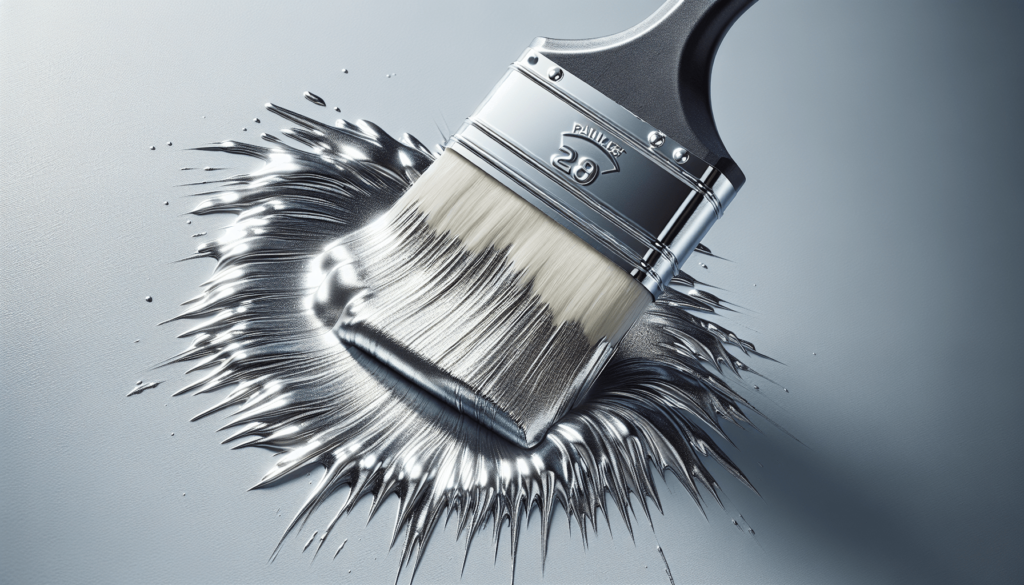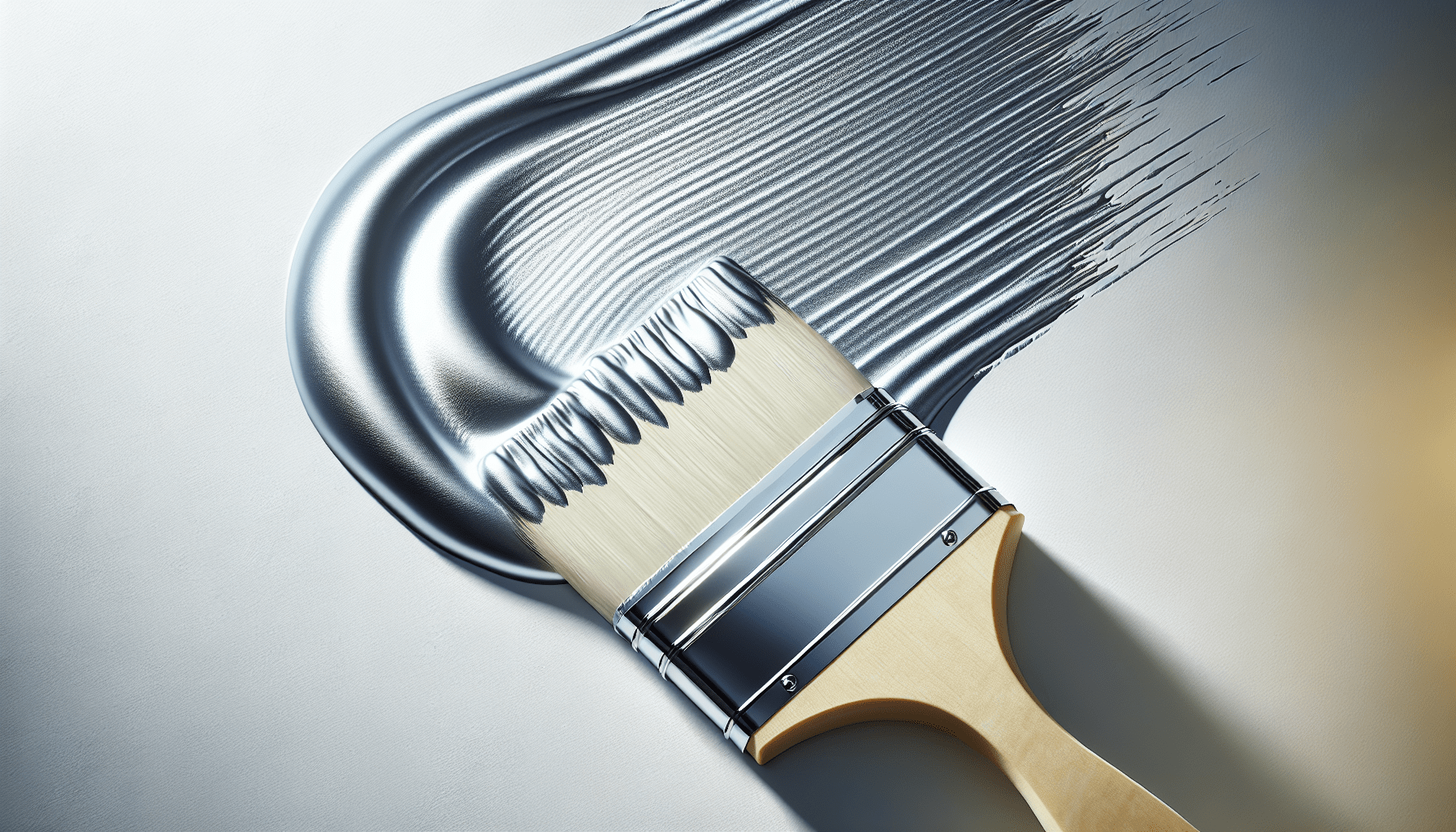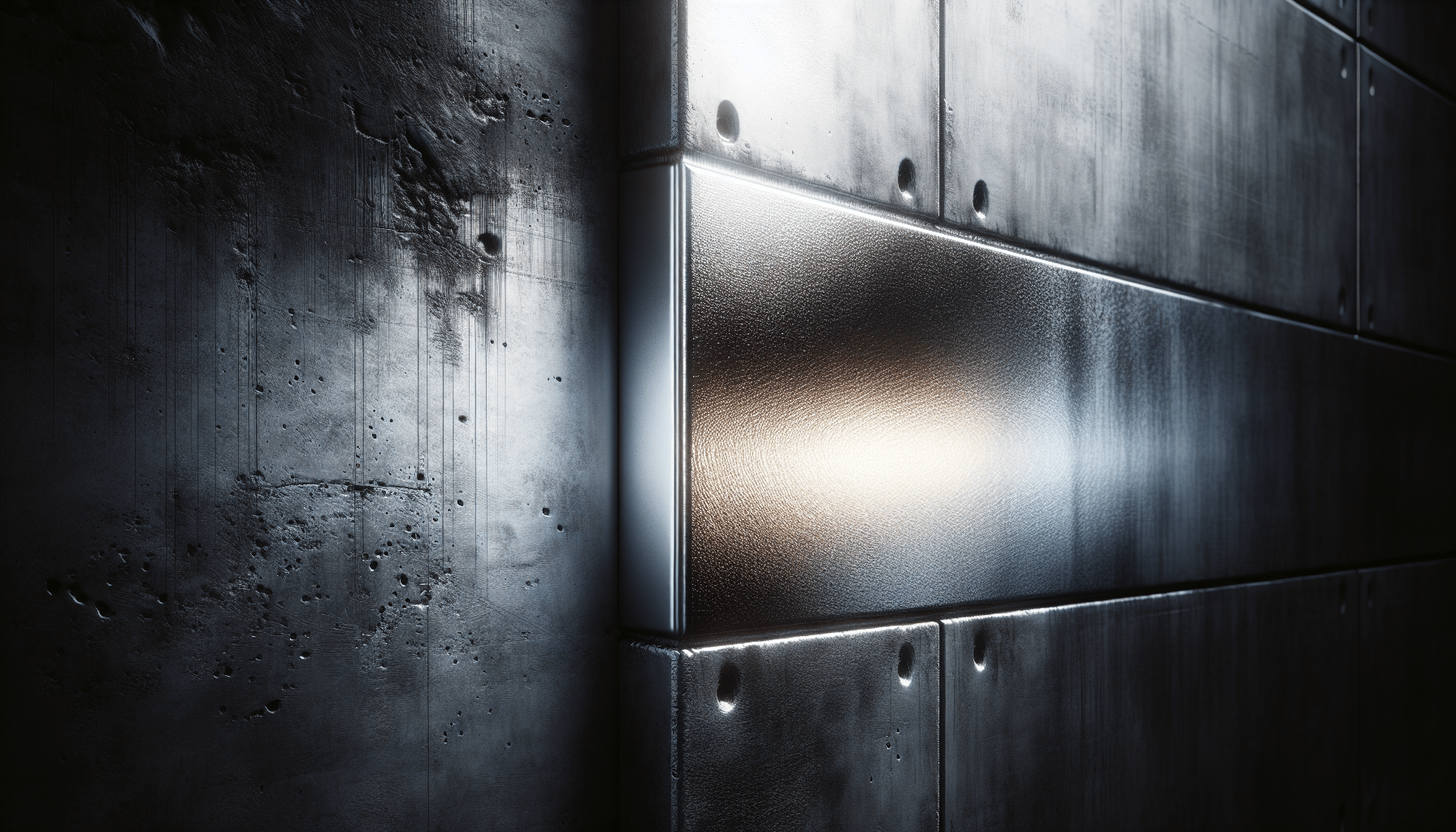Have you ever considered the possibility of using metallic paint on your walls? This idea, while unconventional, can yield stunning results if done correctly. The application of metallic paint can offer a unique, captivating aesthetic that traditional paint often fails to achieve. In this article, we will explore the nuances of using metallic paint on walls, from the benefits and challenges to application techniques and considerations for different room types.
Understanding Metallic Paint
Before discussing the application of metallic paint on walls, it is essential to understand what metallic paint is and what it comprises. Unlike standard paint, metallic paint contains tiny metallic particles, such as aluminum, bronze, or copper. These particles give the paint its distinctive shimmer and shine, reflecting light to create a luminous effect.
Composition and Types of Metallic Paint
Metallic paint is often categorized based on the metal particles embedded within it. Here is a brief overview of the most common types:
| Type | Characteristics |
|---|---|
| Aluminum | Offers a bright, silver finish with high reflectivity. |
| Bronze | Provides a warm, brownish-gold sheen, often used for antique or vintage effects. |
| Copper | Gives a reddish-brown finish with a rich, luxurious appearance. |
| Gold | Delivers a yellowish, luxurious glow, often used in high-end or opulent settings. |
In addition to their unique characteristics, each type of metallic paint may come in various finishes such as matte, satin, and high-gloss, each lending a different aesthetic to the space.
Benefits of Using Metallic Paint on Walls
Opting for metallic paint on your walls can bring several benefits, transforming an ordinary room into an extraordinary space:
Unique Aesthetic Appeal
The reflective properties of metallic paint can enhance the visual depth and dimension of a room. This is particularly useful for creating focal points or accentuating architectural features such as arches, recessed areas, or textured walls.
Light Reflection
Metallic paint can make a room appear brighter and more spacious by reflecting natural and artificial light. This can be particularly beneficial in small or dark rooms where light is limited.
Durability
Metallic paints are often more durable than standard paints due to their composition. They provide a robust, long-lasting finish that can withstand the test of time, making them ideal for high-traffic areas.
Challenges of Using Metallic Paint on Walls
Despite its numerous advantages, metallic paint comes with its own set of challenges. Understanding these challenges can help you make an informed decision and prepare adequately for the application process.
Application Difficulty
Applying metallic paint can be more challenging compared to regular paint. The metallic particles need to be distributed evenly to avoid streaks and patches, requiring a more skillful application.
Surface Preparation
Proper surface preparation is crucial when using metallic paint. Any imperfections on the wall, such as dents or scratches, will be more pronounced when covered with metallic paint. Therefore, meticulous preparatory work, including cleaning, sanding, and priming, is essential.
Cost Considerations
Metallic paint is generally more expensive than standard paint. Additionally, it often requires multiple coats to achieve the desired effect, which can further increase the overall cost.

Application Techniques for Metallic Paint
Applying metallic paint requires a careful and deliberate approach to ensure an even and professional finish. Here are the steps and techniques involved in the process:
Preparing the Surface
Proper surface preparation is paramount for a successful metallic paint application. Here’s a detailed guide on how to prep your walls:
-
Clean the Surface: Remove any dirt, dust, or grease from the walls. A mild detergent solution can be used for this purpose.
-
Sand the Walls: Sand the surface to create a smooth, even base. Use fine-grit sandpaper for this task.
-
Fill Imperfections: Use a quality filler to repair any cracks, holes, or dents in the wall. Sand the filled areas once they are dry.
-
Prime the Wall: Apply a high-quality primer suited for metallic paint. This step ensures better adhesion and a smoother finish.
Choosing the Right Tools
The tools you use can significantly impact the final outcome. Here are the recommended tools for applying metallic paint:
| Tool | Purpose |
|---|---|
| High-Quality Brushes | For cutting in edges and corners, ensuring precise application. |
| Foam Rollers | Ideal for achieving a smooth, even finish without brush strokes or roller marks. |
| Sprayers | Suitable for large surfaces to ensure an even distribution of metallic particles. |
Application Process
Following a systematic application process can ensure a flawless finish. Here’s a step-by-step guide:
-
Stir the Paint: Metallic particles tend to settle at the bottom. Stir the paint thoroughly to ensure an even distribution of particles.
-
Cutting In: Start by cutting in edges, corners, and around fixtures using a high-quality brush.
-
Rolling the Paint: Use a foam roller to apply the paint in a consistent pattern. Work in small sections and use a crisscross pattern to avoid visible lines.
-
Multiple Coats: Apply multiple thin coats rather than one thick coat. Allow adequate drying time between coats as specified by the manufacturer.
Considerations for Different Room Types
The use of metallic paint can vary depending on the room type, each requiring specific considerations to achieve the best results.
Living Room
The living room is often the centerpiece of a home, making it an ideal candidate for metallic paint. Consider using metallic paint on an accent wall to create a focal point. A subtle metallic sheen can add a touch of elegance and sophistication without overwhelming the space.
Bedrooms
In the bedroom, metallic paint can be used to create a soothing and luxurious ambiance. Consider a matte or satin finish to achieve a softer, more relaxing aesthetic. Metallic paint can be particularly effective on ceilings, creating a sense of depth and an ethereal atmosphere.
Kitchen and Dining Areas
The kitchen and dining areas can benefit from the light-reflective properties of metallic paint. In these spaces, a high-gloss finish can add a modern and sleek look. Ensure that the paint used is durable and easy to clean, as these areas are prone to splashes and spills.
Bathrooms
Metallic paint can transform a bathroom into a spa-like retreat. The moisture-and-mildew-resistant properties of certain metallic paints make them suitable for this high-humidity environment. Consider using metallic paint on the ceiling or in small doses to avoid creating an overly reflective space.

Maintenance and Longevity of Metallic Paint
Once you’ve successfully applied metallic paint to your walls, maintaining its pristine appearance is essential. Here are some tips for ensuring the longevity of your metallic paint finish:
Regular Cleaning
Dust and dirt can dull the shine of metallic paint. Regularly dust the painted surfaces using a soft, dry cloth. For more stubborn dirt, a damp cloth with mild soap can be used. Avoid abrasive cleaners that can damage the metallic particles.
Touch-Ups
Over time, your walls may sustain minor scratches or chips. Keep some leftover paint for touch-ups to ensure a consistent and continuous appearance. Using the same application technique will help blend the touch-up seamlessly with the existing paint.
Protective Coatings
In high-traffic areas, consider applying a clear protective coating over the metallic paint. This can enhance the durability and longevity of the paint, protecting it from wear and tear.
Conclusion: Is Metallic Paint Right for Your Walls?
The use of metallic paint on walls can provide a unique and visually stunning effect that traditional paints cannot replicate. However, it requires a significant investment of time, effort, and resources to achieve the desired outcome. If you are willing to embrace the challenges, the results can be highly rewarding, transforming ordinary walls into extraordinary canvases of light and color.
When deciding whether metallic paint is right for your space, consider factors such as the room type, desired aesthetic, and your level of expertise in painting techniques. With proper planning, preparation, and execution, metallic paint can elevate the interior design of any space, creating a lasting impression and a touch of luxury.



